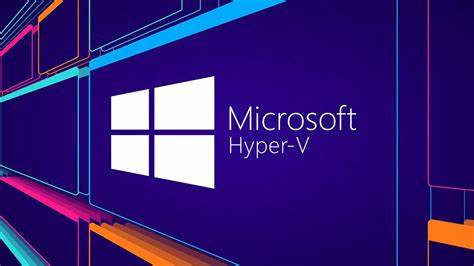Blog
What are the Main Features and Capabilities of Hyper-V?

Microsoft Hyper-V, previously known as Windows Server Virtualization, debuted with the release of Windows Server 2008. It was an advancement in virtualization, allowing organisations to leverage the power of virtual machines. Hyper-v VPS has grown over time, with each version bringing new capabilities and advancements. Hyper-V is a type of software that allows many operating systems to share a single hardware host. It works based on building and managing virtual machines (VMs), each of which has an operating system and associated applications. The hypervisor ensures isolation and effective resource allocation for various VMs, allowing them to run concurrently.
VPS or Virtual Private Server
Hyper-V has established its mark in the business from its inception because it is a Microsoft product and is built on virtual environments as a hypervisor technology. A VPS, or Virtual Private Server, is a virtual machine that is used by one of the service’s customers. Each virtual server has its own fully functional operating system and can be rebooted independently. A Hyper-V VPS provides businesses with a perfect platform for important virtualization situations such as production server consolidation, business continuity management, software testing and development, and dynamic data centre design.
Microsoft ecosystem integration
Hyper-V’s seamless integration with the Windows ecosystem gives it a substantial advantage over competitors. The native integration with Windows Server operating systems is aligned with Microsoft technologies, ensuring that Windows workloads execute optimally and are compatible. Hyper-V’s tight connection with Active Directory, Group Policy, and Windows Update improves manageability and ensures smooth coordination with other Microsoft services.
Cost-efficiency
Hyper-V is frequently a more cost-effective virtualization option than VMware, particularly for organisations that rely significantly on Windows-based servers. Hyper-V is included with all Windows Server editions, lowering licensing expenses and giving an affordable option.
Redundancy
Hyper-V’s Failover Clustering functionality allows you to establish and manage failover clusters. A failover cluster is a set of computers that provide redundancy while increasing the availability of applications and services. Using a failover cluster in a Hyper-v VPS environment accomplishes all of this without requiring as many physical computers. When one node in the cluster fails, the other takes over with minimum disruption to your consumers.
Scalability
Scalability is undoubtedly one of the most important reasons to migrate to a virtualized environment using Hyper-V. You can add or remove servers as needed without purchasing new hardware or removing any existing gear. Depending on your requirements, the licensing limits for each version of Windows Server vary. The following are the licensing details for each Microsoft Windows Server 2008 edition.
Easy to use
Hyper-V’s user-friendly interface and integration with popular Microsoft tools contribute to a shorter learning curve, especially for administrators who are already used to administering Windows environments.
Reduce operational costs
Microsoft’s Hyper-V virtualization technology can significantly reduce operational costs. By purchasing a few powerful servers, you can virtualize all or most of your infrastructure, lowering hardware and maintenance costs. With all your resources consolidated and centralised in a few locations, management becomes much easier.
Scalability and Resource Optimisation
Hyper-V supports scalability with features such as Live Migration, which enables the dynamic movement of virtual machines between hosts. This flexibility is critical for organisations with changing infrastructure requirements. Live Migration allows optimal resource optimization, load balancing, and uninterrupted availability during hardware maintenance or upgrades.
-
Blog1 year ago
MyCSULB: Login to CSULB Student and Employee Portal – MyCSULB 2023
-
Android App3 years ago
Cqatest App What is It
-
Android1 year ago
What Is content://com.android.browser.home/ All About in 2023? Set Up content com android browser home
-
Software2 years ago
A Guide For Better Cybersecurity & Data Protection For Your Devices
-
Latest News2 years ago
Soap2day Similar Sites And Alternatives To Watch Free Movies
-
Android2 years ago
What is OMACP And How To Remove It? Easy Guide OMACP 2022
-
Android3 years ago
What is org.codeaurora.snapcam?
-
Business2 years ago
Know Your Business (KYB) Process – Critical Component For Partnerships





















